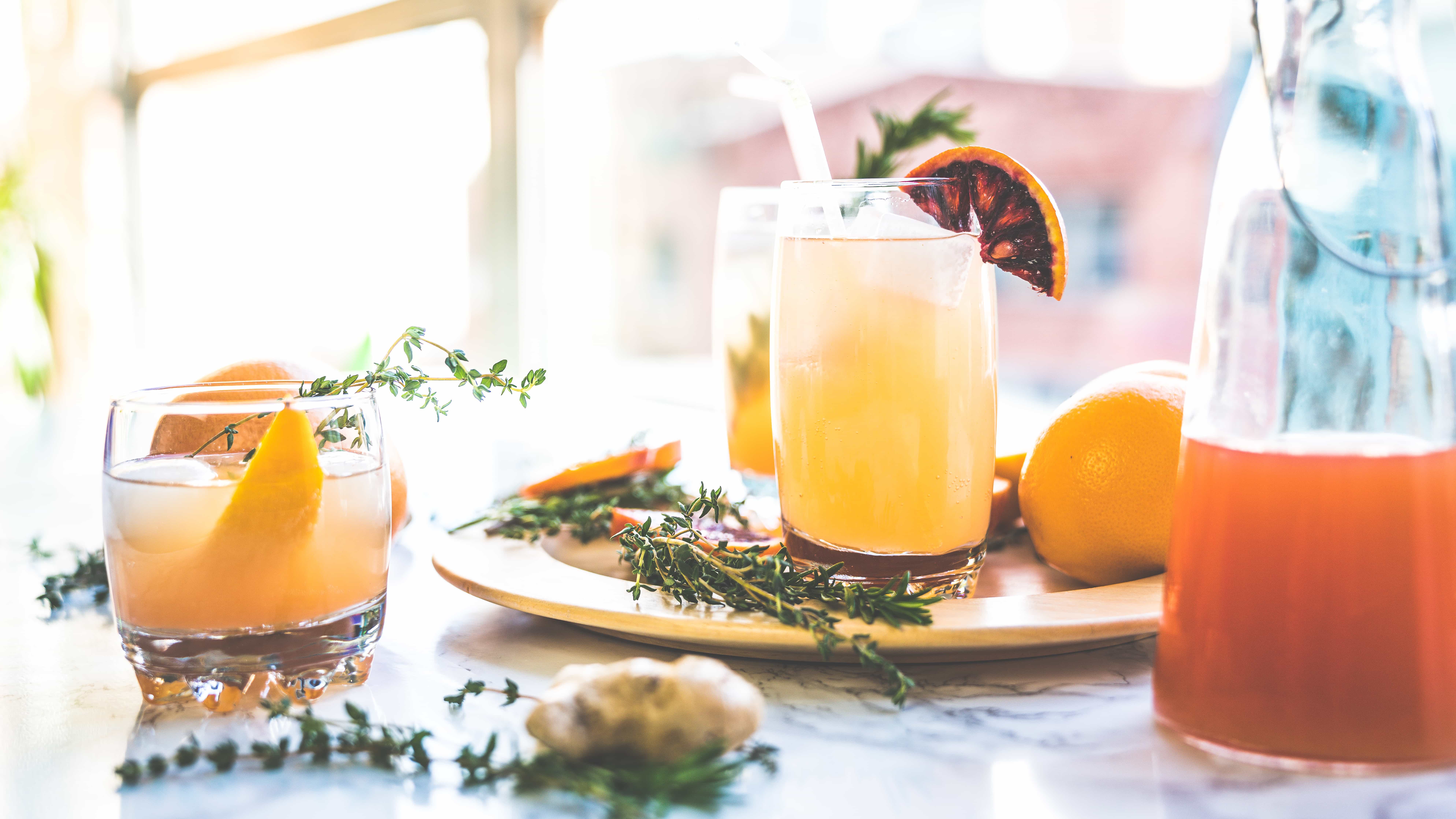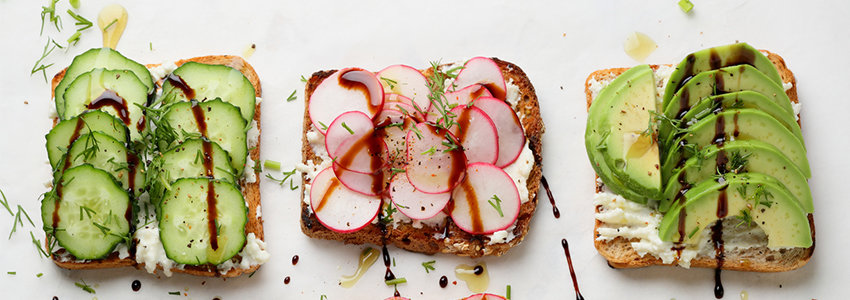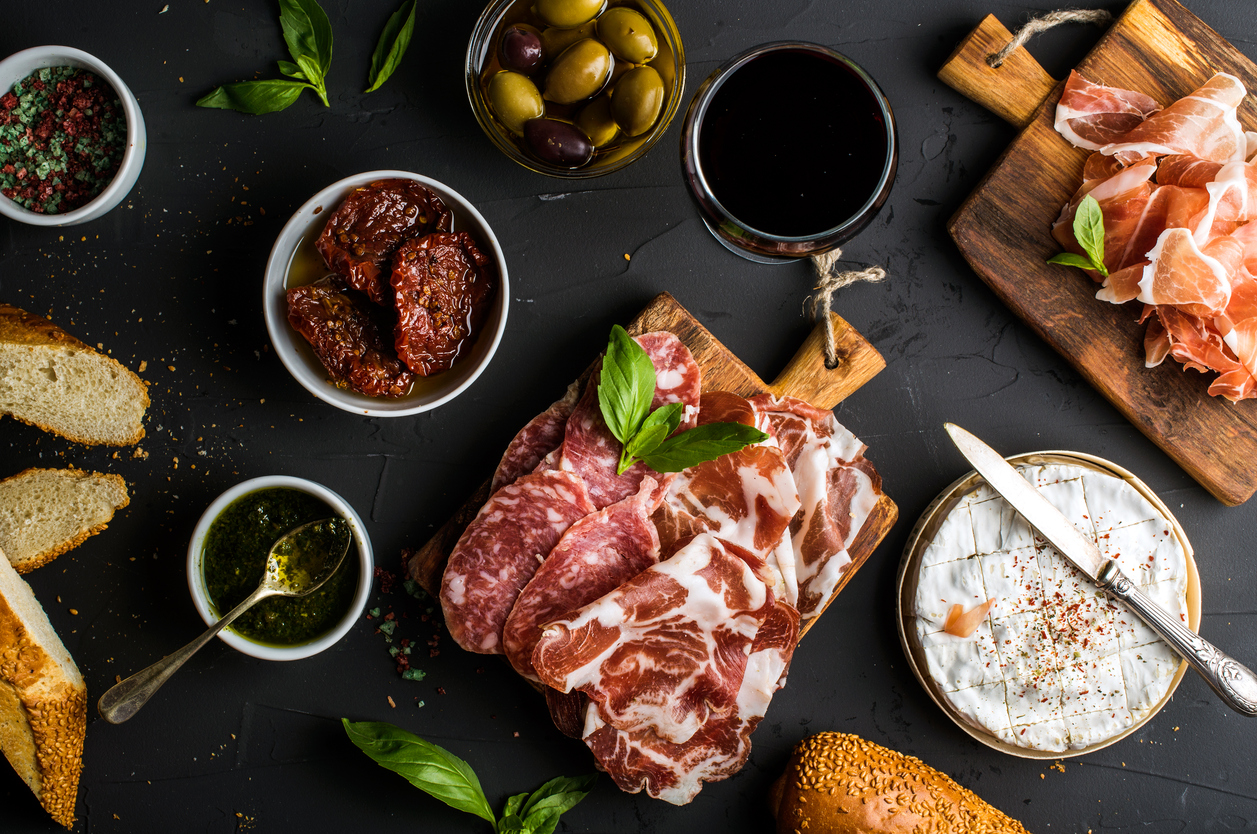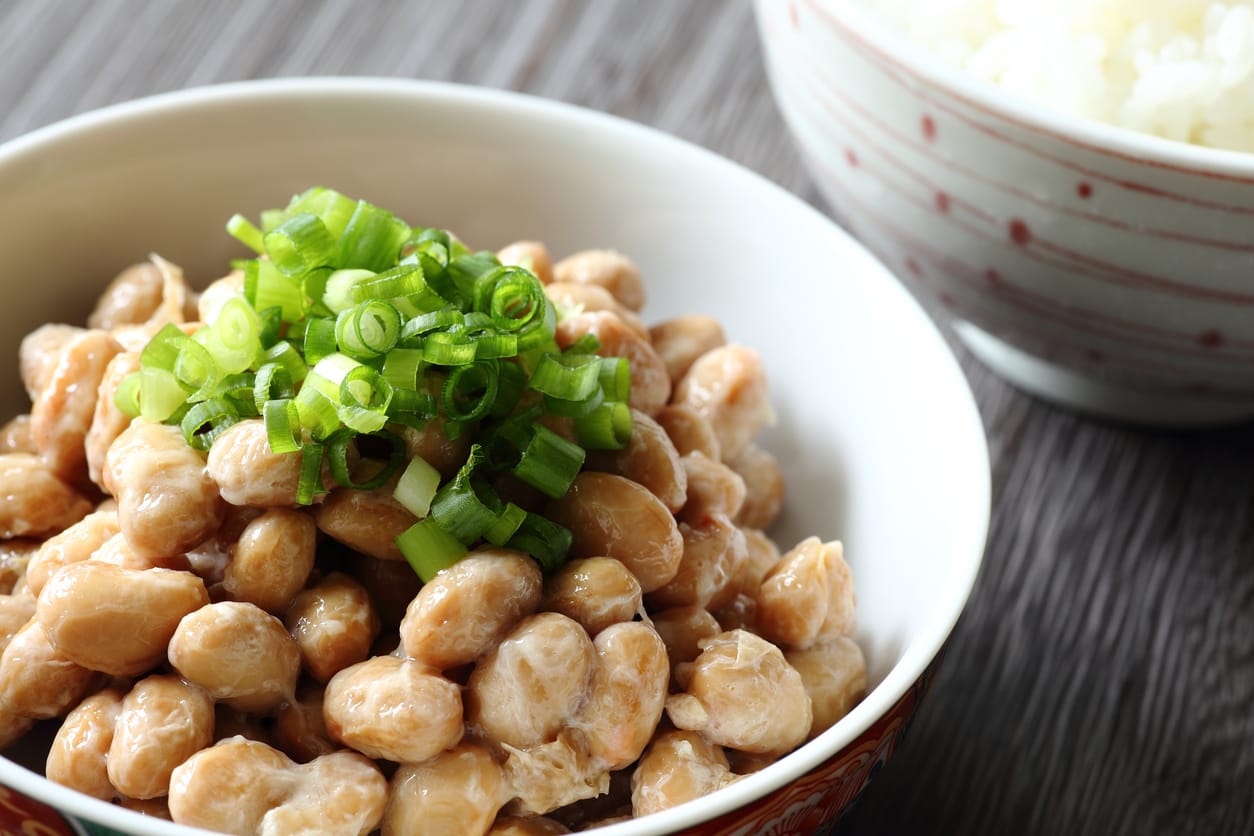Avocado toast, hemp hearts, and kombucha are all the rage – but we can still learn a few things by looking beyond our borders.
So what are other countries around the world doing to live happier, healthier lives?
#1 In France, They Drink Wine
French women have one of the longest life expectancies in the world.
They eat butter, eggs, cheese, bread…yet still have a low rate of heart disease because they also drink wine – specifically red wine. The cardiovascular benefit of red wine has to do with its antioxidant properties from polyphenols. The most active polyphenol in red wine is flavonoids.
But red wine not only protects your heart but may protect your bones as well.
One study shows that moderate wine consumption (1-2 glasses per day) has bone benefits, especially for aging women who have experienced menopause. Findings suggest that the compound resveratrol, which has anti-inflammatory properties helps stimulate bone-forming cells within the body.
So if you enjoy red wine, don’t give it up. But be mindful that excess alcohol and red wine consumption also has the opposite effect on your heart and health.
#2 In Denmark, They Like to Hygge
Hygge (hoo-guh) is one of those words that doesn’t have a direct English translation but is a blend of coziness, contentment, and well-being. In other words, happiness.
In 2016, National Geographic ranked Denmark as the happiest country in the world. So it’s about time we take a look at what habits this Scandinavian country enjoys…
With fewer and fewer Americans being happy, why not try Hygge for yourself. (Maybe you already do in your own way? If so, let us know in the comments below.)
While enjoying comfort, a warm cozy place and the company of friends, the Danes (both men and women) practice gratitude as an integral part of Hygge. Consistently practicing gratitude has been shown to be great for mental health and for stress levels.
Stress can negatively impact your bones. When stress is prolonged, a steroid hormone called cortisol rises – and high cortisol levels can reduce your body’s ability to absorb calcium properly.
So make sure this doesn’t happen to you and if you start feeling the stress, remember the Danish habit called Hygge. The concept has reached such popularity there are even online courses to learn all about it and how to do it.

#3 In Argentina, They Drink Yerba Mate
Yerba mate is the national drink of Argentina, Uruguay, Paraguay, and Southern Brazil, where it’s consumed 6 to 1 over coffee!
It’s known to have ‘the strength of coffee’, the health benefits of tea and a hint of chocolate all in one. While still containing caffeine (the caffeine content varies between that of coffee and green tea). Unlike coffee, it’s not acid forming or oily, so it’s less likely cause the jitters.
If you’re looking to go caffeine-free though, why not try calcium-rich mineral waters?
In fact, healthy women have shown to absorb and retain calcium just as well from calcium-rich mineral water as from milk. So those of you that are lactose intolerant or choose not to consume milk will find this is a great alternative.
You can even take it to the next level by making a concentrate that is known as a shrub. A shrub is a fermented blend of fruit, app, e cider vinegar and honey.
The fermentation process consumes the sugars in the honey and provides gut-healthy probiotics. Once your shrub has fully fermented you simply add a healthy splash of mineral water and enjoy a treat that happens to boost your health.
Learn more about how to make your own delicious shrub recipe here.
#4 In Holland They Bike for Transportation, Not for Leisure
The Dutch use bikes as their main source of transportation for about one-third or their daily activities. This more than any other European country, according to the European Commission.
This frees up mental space from the worries of finding and paying for parking, benefits the environment and keeps them physically fit.
Researchers have also identified a correlation between active commuting and cardiovascular risk. In fact, active commuting can reduce your cardiovascular risk by an overall 11% and even more so in women!
Adopting this healthy living tip can benefit your mental, cardiovascular and bone health. All while freeing up your mind and wallet from parking worries. Definitely, a healthy habit swap worth making.
#5 In Greece, They Focus on Diet
It seems like not a day goes by without hearing about a new found health benefit of the Mediterranean Diet.
This healthy diet is rich in fruits, vegetables, healthy fats and lean, healthy proteins. Everything that nutritionists and cardiologists dream of!
We’re talking green leafy vegetables, tomatoes, olives, seeds, nuts, beans and fish galore with lots of legit olive oil.
All of that provides fiber, protein, and fat to keep you satiated long after your meal and thus prevents overeating. The nutrients nourish every system in your body and the healthy fats support mental, neurological, cardiac and even bone health.
#6 In Norway, They Eat Fish
In Norway, their cuisine consists largely of salmon, mackerel and pickled herring – all fish rich in omega 3 fatty acids, especially EPA and DHA.
EPA has been found to reduce inflammation, which we are now learning to be the root cause and accelerator for many disease states. DHA is incredible for brain development and then a healthy brain function the rest of our lives.
If fish, especially pickled, is not your thing, but you want the amazing health benefits of omega-3 fatty acids, choose a quality omega-3 supplement and make it a healthy habit to take regularly.
#7 In Sweden, They Make Socializing a Priority
While there’s no direct English translation for the Swedish word Fika, the concept is one Americans will understand and love – it’s time to set aside for a coffee break with friends, family, and colleagues.
It’s much more than a hurried cup of low-grade coffee in the breakroom or a meeting at a wobbly table at a loud, mainstream coffee café.
Fika is the conscious act of carving out time to enjoy your company, coffee, and perfectly paired snacks if you’re looking to Fika proper.
That’s right, as one of the top coffee consumers in the world, Sweden knows how to enjoy their coffee to a level that Fika can be either a noun or a verb, both if you’re up for it.
To truly enjoy Fika, make sure to put your phone away after you snap your social media perfect picture. The key is to be in the moment with your company at the table when you Fika.
In Sweden, this cultural tradition is observed frequently and sometimes several times a day. This provides time to socialize which can lower stress and allow you time to get to know someone better in a positive, relaxing manner.
Studies show that there is a link between social relationships and health, especially for women.
Healthy relationships, both structured and unstructured, prolong life and boost physical health. This correlation or pattern is shown to be stronger in women.
So carve out time for your friends and family, it’s important. Whether that’s over a cup of coffee, tea or another activity that keeps you connected.
#8 In Taiwan, They Cook The Majority of Meals at Home
We’ve all heard that one of the healthiest habit swaps for our waistline and budget is packing a homemade lunch and eating dinner at home instead of going out, but there’s more to it than that.
A study by Cambridge University found that elderly Taiwanese people who cooked most of their meals at home lived longer than those who did not. Interestingly, the same study shows that women benefited more from cooking more frequently than men did.
Regardless of gender, cooking at home instead of eating out gives you control over your ingredients, how they are handled (washed hands, utensils and produce), sodium content and portion size – all things that you have little to no control over when you go out to eat.
Staying in also saves money, which in turn reduces stress.
Invite friends and family over to enjoy the meal with you and enjoy the additional bonus the health boost that comes with social relationships.
#9 In Japan, They Eat This…
Japan has both some of the lowest dairy and calcium consumption and lowest fracture rates in the world.
This is so different from everything we’ve grown accustomed to and when you look closer you’ll see the importance of ALL nutrients the body needs.
While dairy and calcium consumption is low, Japanese diets are rich in vitamin K2, a vitamin that has been found to promote healthy bone metabolism. Vitamin K2 also acts to support calcium absorption and directs calcium straight to your bones – and keeps it out of your heart, arteries, etc.
Japanese diets are distinctly high in this particular nutrient because of a food called Natto. Natto is a fermented soybean product and happens to be the richest source of dietary vitamin K2 on the planet!
It’s a typical breakfast food in Japan dating back hundreds of years to the Samurai era. The Samurai’s believed it quickened their reflexes and improved strength.
However, if its scarce availability in the U.S., potent aroma and slimy texture are all factors you can’t get past, you can supplement with a clinically supported bone-building supplement with vitamin K2.
#10 In India, They Use Spices
Perhaps the most famous spice in Indian dishes is turmeric.
You don’t have to search too long to discover article after article touting the health benefits of turmeric, especially its anti-inflammatory properties.
In fact, if you are looking for natural pain relief from chronic inflammation, turmeric may be your savior. One study published in The Journal of Oncogene showed that curcumin, the active agent in turmeric, may be more potent than Ibuprofen and Aspirin when it comes to suppressing inflammation.
Turmeric is also a natural phytoestrogen, which may help ease hormonal imbalances during menopause. Estrogen deficiency during this time can lead to many health problems, including joint pain and reduced bone mineral density.
To get the most out of turmeric, you should consume it regularly. If incorporating it every day through meals or drinks isn’t realistic, try Triple Power Omega 3 Fish Oil. It contains clinical doses of omega 3 fatty acids, including organic turmeric curcumin and another potent anti-inflammatory, astaxanthin.
Takeaway
Little changes can make a big difference in your health.
Taking time for Fika, hopping on your bike instead of in your car or trying a new food like Natto may seem daunting, but it can also be fun.
So why not try some of the habits above and see if they work for you. You don’t have to try them all at once, but choose one or two and build from there.
Maybe you’re already familiar and incorporating a handful of these into your daily life already? Let us know in the comments below! And of any other habits, we may have missed…









Margaret
April 15, 2017 , 9:16 amThank you for sharing information from around the world to help us stay healthier. Always remember to incorporate God in your life. If we live by God’s commandments we open ourselves up to blessings from His Spirit and angelic help. I believe when we continuously break God’s laws (sin), we put ourselves in harm’s way opening ourselves to demons directing our paths.